The new senior housing, from “dementia villages” to Margaritavilles
In 2009, a nursing home opened in Weesp, Netherlands, not far from Amsterdam, that was unlike any other in the world. It included a town square, a post office, and a theater. In its compact convenience store, residents could “shop” for milk, shampoo, and other necessities, but without the need to pay for anything. In this neighborhood, called Hogeweyk, all of the residents had dementia, and their environment was designed to allow them the quotidian pleasures of daily life, despite the illness that likely would have landed them in a hospital-like ward at a traditional nursing facility.
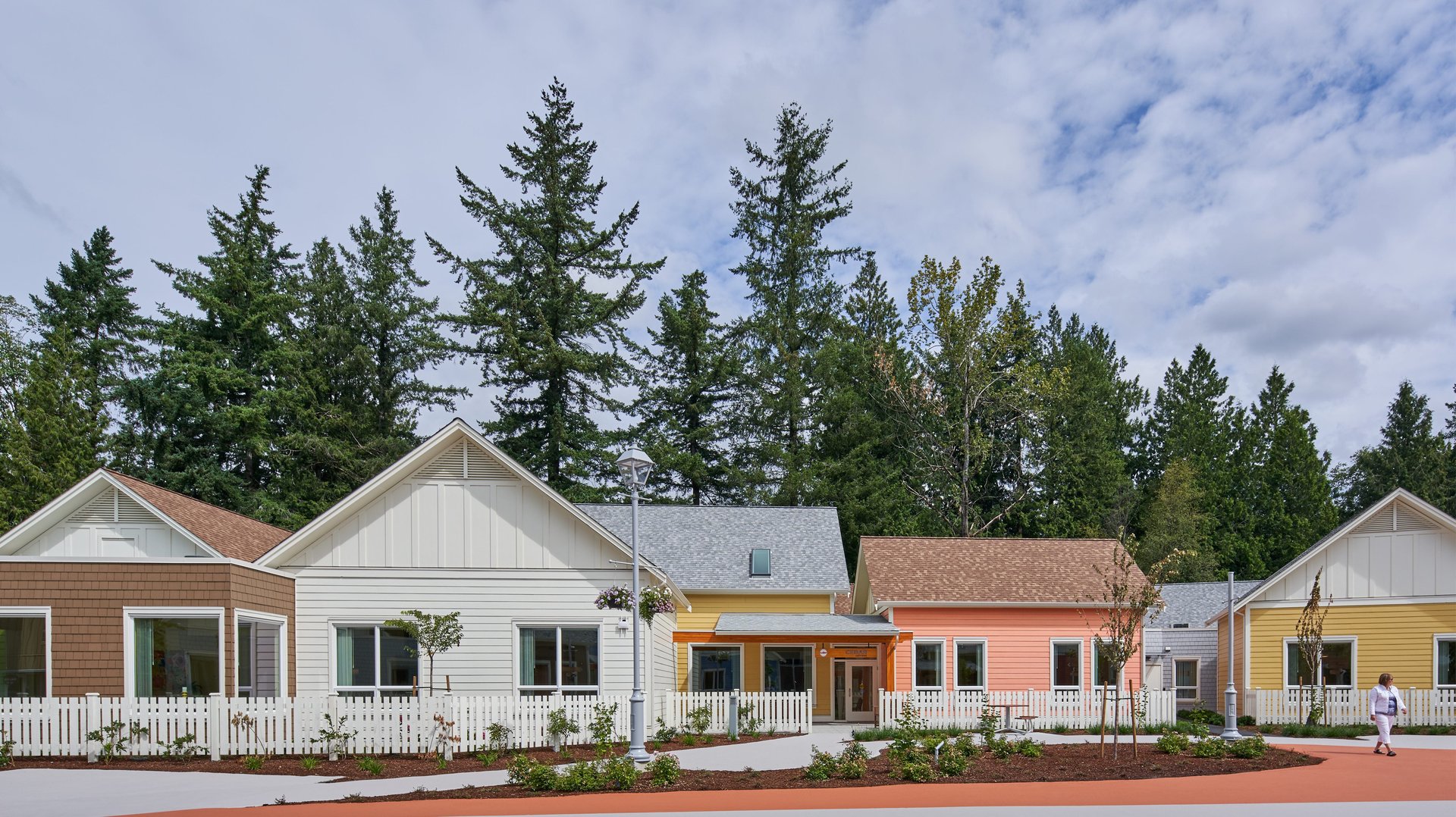

In 2009, a nursing home opened in Weesp, Netherlands, not far from Amsterdam, that was unlike any other in the world. It included a town square, a post office, and a theater. In its compact convenience store, residents could “shop” for milk, shampoo, and other necessities, but without the need to pay for anything. In this neighborhood, called Hogeweyk, all of the residents had dementia, and their environment was designed to allow them the quotidian pleasures of daily life, despite the illness that likely would have landed them in a hospital-like ward at a traditional nursing facility.
In its early days, the remarkable care home was profiled on CNN. It has hosted TV crews and journalists many times since, and its founders have given talks at TED conferences and elsewhere about the philosophical concepts behind the project.
Elroy Jespersen of Richmond, British Columbia, remembers seeing Hogewey co-founder Eloy van Hal speak in Canada. “Everybody said, ‘Oh, great, great. Let’s go. We need those. We should do those.’ And nothing happened,” he recalls. He already knew from experience how difficult it could be to find a suitable living arrangement for people with dementia—he had been an operations executive at Verve, a Canadian-based seniors housing company, and he could see his wife’s aunt suffering from Alzheimer’s without a space that could support her. “At the end of the day, I was in the business, and I knew all of the options and I couldn’t find a place, because there was no place,” he says.
And yet the dementia village conceit had captured his imagination. He said to himself, “If you don’t do it, who’s going to do it? And if you don’t do it now, when are you going to do it?”
“So I said, ‘Okay, I’ll do it now,’” he tells me.
Jespersen was knowledgeable enough about the industry to believe he could pull it off, and connected to a group of family investors who would get onboard with his mission. He gave up once, defeated by a two-year search for a couple of acres of affordable land in Vancouver’s famously always-hot real estate market. But then one day he happened upon an ad from the school board in Langley, a suburb an hour outside Vancouver that borders Washington state. Four school sites were up for auction; one took up seven acres. “It was well-treed and the birds were chirping and I thought ‘We can make this work,’” he recalls. His team put in a bid, and got it.
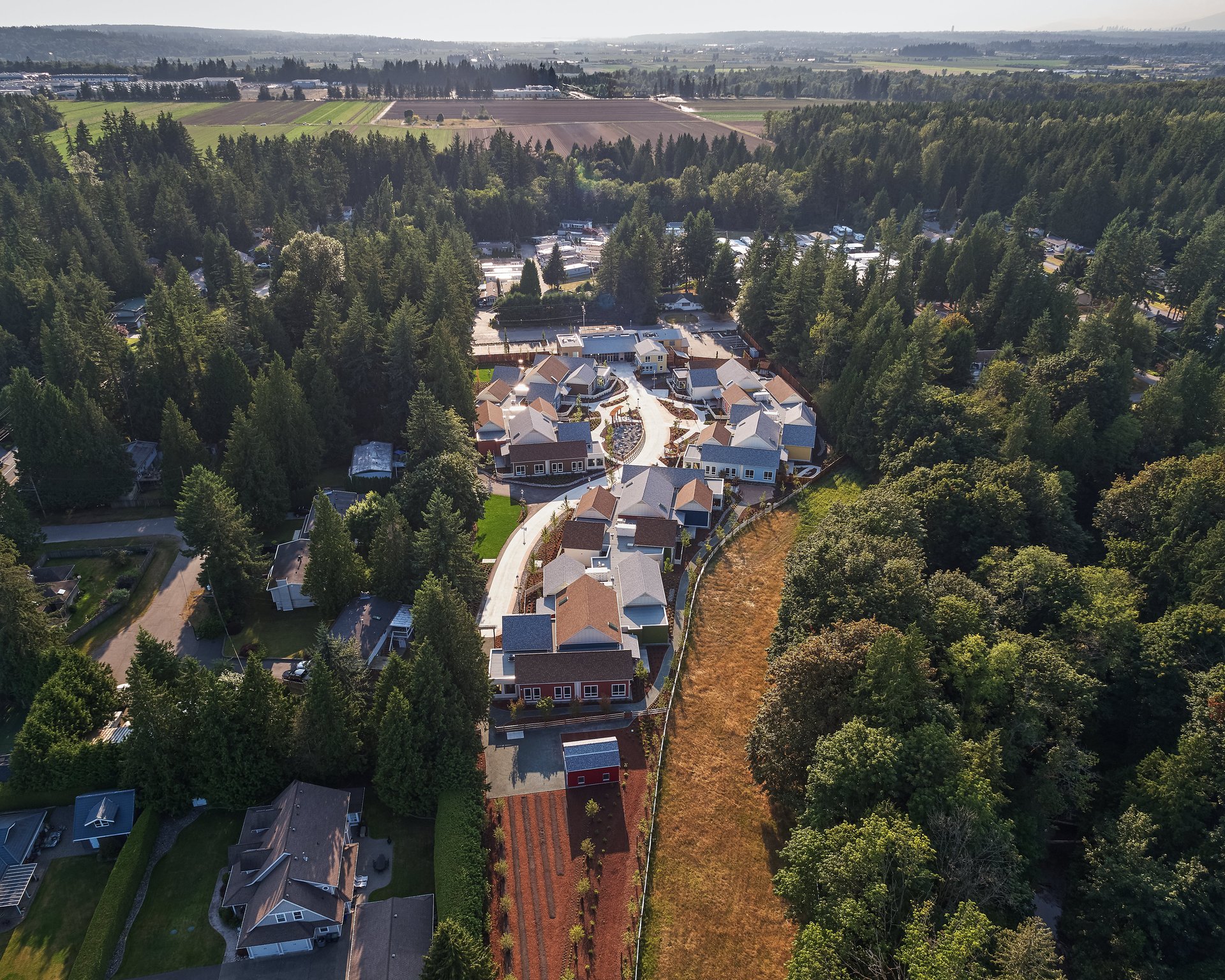
What’s arguably Canada’s most interesting new senior-housing development was underway. The Village Langley opened last August as the country’s first dementia village, where residents can walk freely about the fenced-enclosed property, in and out of their communal homes, back and forth to the community center, out to a barn to visit the animals that will move in as neighbors. Soon the residents will be electronically monitored, too, with a Fitbit-like bracelet from Philips that allows staff to track residents in real time and trigger alerts if they wander outside geofenced areas.
Like Paul Klaassen, who founded Sunrise Senior Living in the US in 1981, Jespersen now tours politicians and others through the village as part of a mission to show them how an unusual model can work in a North American system. By next year, he expects a few local academics to be running rigorous health studies. And he’s not alone. He has become part of a wave of entrepreneurs rethinking senior-housing design and the philosophy behind care.
The current senior housing model has finished its first product cycle
If there’s one thing that senior housing operators agree on, it’s that the next wave of aging baby boomers is not particularly interested in the model of assisted living that puts seniors all together on a suburban site, living in a pretty space that nonetheless can sometimes rob them of autonomy.
“You know, the first generation, they just wanted something that wasn’t a nursing home to be honest with you,” says Andrew Carle, a lecturer in senior-living administration at Georgetown University’s Master’s in Aging and Health program, referring to the Greatest Generation seniors who moved into private senior housing in the 1980s and ‘90s. “They were like, ‘It’s not a nursing home. I’m in. Thank you,’” he says.
But the boomers who are currently nearing a phase in life when they may need services to live well are a more educated and well-traveled cohort. And they want more than not-a-nursing home, he says.
To be sure, the default desire is to stay home. Stephen Golant, a gerontologist and geographer, and professor emeritus at the University of Florida, says one source of uncertainty about the industry’s sustainability is the rise of technology that may enable people to stay even longer in their own houses or apartments.
For those who see the value of living around other humans later in life, especially if they’d otherwise be alone at home, the challenge for senior housing providers will be to help tenants establish “residential normalcy,” a framing Golant developed. It describes the sense that your home brings both comfort and a sense of mastery, that you have control and autonomy. The challenge for assisted living homes is to make the experience pleasurable, but at the same time, support someone without asking them to sacrifice their independence. Traditional assisted living providers may claim that it’s just like living in your own apartment, “but you don’t move into a condo expecting to be controlled,” says Golant.
So what senior housing providers are experimenting with now is making the experience more like home in that second sense. For example, many are trying to “increase the spontaneity of the eating experience and not make it so formal,” says Golant, also the author of Aging in the Right Place (Health Professions Press, 2015). “At home, we don’t eat lunch between 12 and 1 every day, most of us anyway,” he points out.
It’s going to take more than modifications, no matter how meaningful, to shake off the institutionalizing habits of most senior living facilities. Still, it’s happening. Beneath the themes of promising industry trends is the conviction that your life can be lived communally and feel like it belongs to you. It’s one of the principles that drives Jespersen’s vision and that of many others.
But it’s not the only way in which senior-living arrangements are changing.
Living with your tribe
Probably the most noticeable of these game-changing trends is customization, or the development of niche living for affinity groups, a reaction to the generic aesthetic and recreational programming of today’s standard residences, where the unspoken message is: Check your preferences and identities at the door.
A small but growing number of affinity group seniors homes serve specific populations, like Priya Living, which serves Indian immigrants in the US, or the Aegis group, based in Seattle, which runs Aegis Gardens, offering “Asian inspired, culturally-authentic” communities in Fremont, California, and Newcastle, Washington, according to its website. Such places have existed for years in smaller numbers. Now, in recognition of the diversity of the aging population, a few are operating at a larger scale.
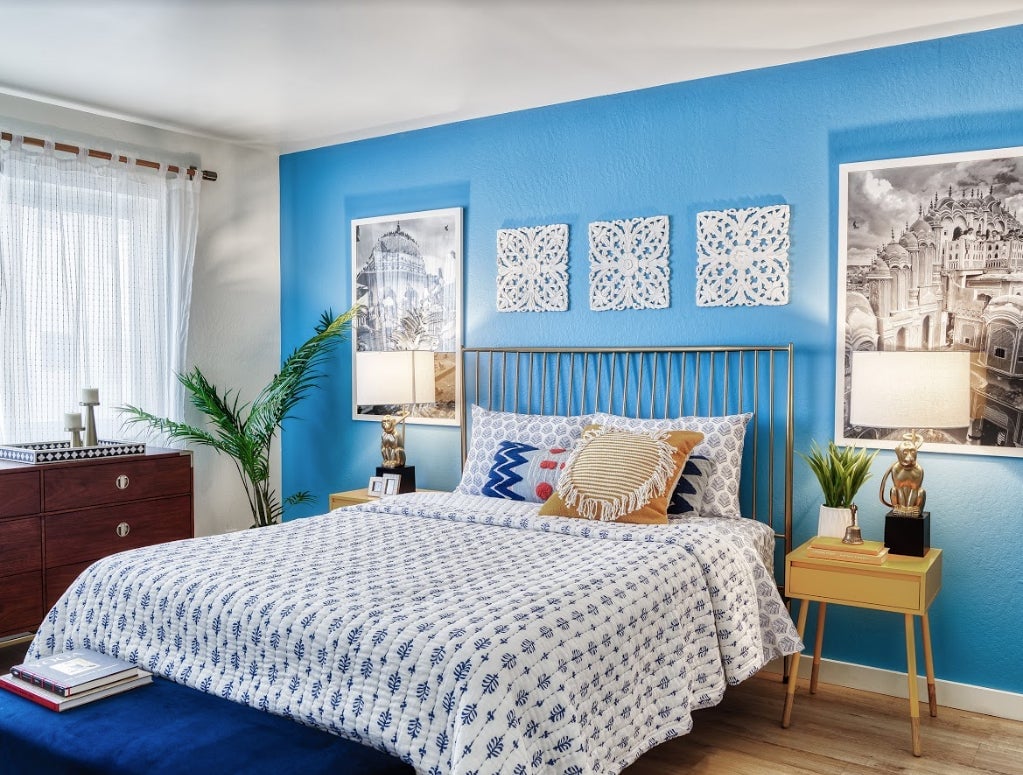
The best university-based retirement communities, a term Carle coined, are set on or near major campuses, drawing together retirees committed to idea of lifelong learning, and/or who still feel tied to their alma mater. This idea is not entirely new, either—a residence at Oberlin College was featured in The New York Times six years ago—but the concept is enjoying a kind of renaissance, according to Paul Riepma, head of marketing for Oregon-based Pacific Retirement Services. His firm is behind Mirabella at ASU, a nearly finished development at Arizona State University. When it opens later this year, residents of the glass-tower dorm (in fact, they are condo-style apartments, with independent, assisted living, and memory-care services) will hold ID cards that will grant them library privileges and access to classes as guest learners at the college.
These elders also will be invited to join a mentoring group, already 65-members strong, to advise students on their professional futures. “Every year, people graduate from ASU. I got a degree in economics; when I graduated I would have loved to have someone sit down with me and say, ‘Paul, here’s where you can go with that degree,’” Riepma says. “Our people are living on a university setting, and they have one thing that none of our graduating seniors have. And that’s life experience.”
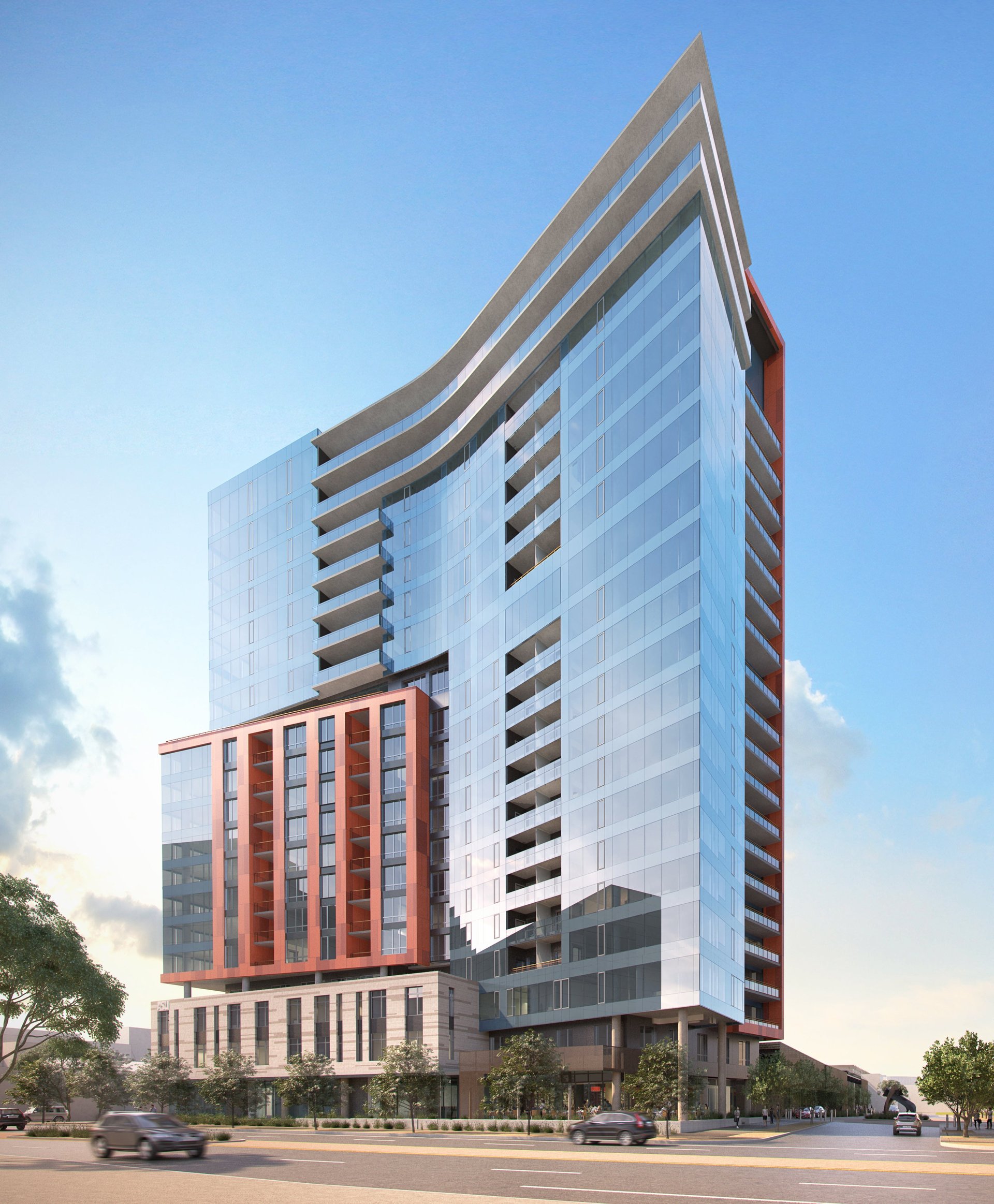
Some tribes struck out on their own long ago, like those who set up the Escapee assisted living site for RVers in Livingston, Texas, in 1992. In the RV park, trailers serve as permanent homes and employees at a standalone community center provide nursing and medication management services.
Other groups are gaining momentum now. Stonewall House, a seniors home for New York’s low-income LGBTQ seniors, just opened in Brooklyn, trailing similar developments in Los Angeles, Philadelphia, and Chicago. A handful of private-pay, LGBTQ-focused assisted living homes and CCRCs are also scattered throughout the country, like the six-year-old Stonewall Gardens residence in Palm Springs, California, and A Place For Us in Cleveland, which opened in 2017.
Jimmy Buffett’s Margaritaville company has partnered with Minto properties to build Latitude Margaritaville on sites in Florida and South Carolina. They are active adult communities now, but Tim Mullaney, the 39-year-old editor-in-chief of Senior Housing News, says there’s some discussion in the industry about what will become of such developments in 20 or 30 years. Will care be brought to them, or will the developments, where every day is beach day, continue to replenish its residences with younger Parrot Heads? “I’m not super into Jimmy Buffett. I don’t think that’s necessarily personally appealing to me,” says Mullaney, “but I liked that it signals that by the time my parents and I are thinking about senior living, there might be some version of this that really does appeal to me and my interests specifically, and that create a sense of community for me.”
Letting everyone in
In other experiments, developers are creating mixed-used complexes that happen to include senior housing. Such concepts are still rare, but Mullaney notes that leaders of the San Francisco Campus for Jewish Living skilled nursing home took this route when the organization faced the risk of Medicaid-reimbursement cuts several years ago. Rather than risk insolvency in the future, they built Byer Square, a multipurpose, multigenerational complex.
Josh Crisp, CEO of Solinity, a senior living development and marketing company, also points to Noterre, a 17-acre, hospital-adjacent property in Liberty, Missouri. “They have a what I would call an integrated model and are multigenerational, so they have integrated with a health system and they also have multigenerational living environments,” he says.
When you drive up to this campus, you’ll see a three-story gym and wellness center that anyone can join, and what could be a low-rise condo building, he explains. In fact, part of the housing—but not all—is dedicated to senior living. “I’m 40 and it’s a very attractive membership gym,” says Crisp, who is also co-host of Bridge The Gap, a podcast about the industry. “I would join and become a member now. But it also has programs and services designed for those who are aging. It has a section designed specifically with equipment that’s aging friendly, and there are therapy services, just like there would be personal training services.”
Serving the urban and the globally minded
For moneyed, restaurant-going, city-dwelling seniors, the retirement high-rises have arrived, true hybrids of the five-star hotel and residential model. Two ultra-luxury buildings are on the verge of opening in Manhattan, Inspir Carnegie Hill, named for its upscale neighborhood on the Upper East Side, and Sunrise at East 56th in Midtown East. Joann Ryan, general manager of the midtown project, says the two buildings are not actually competing with each other. As New Yorkers are aware, moving a few blocks is akin to switching coasts—and these properties intend to serve the locals.

Sunrise at East 56th will charge $13,000 to $33,500 per month for rent and care; seven floors will be dedicated to assisted living and seven to memory care. Interestingly, it too will make Philips location-tracking bracelets available to residents. But, says Ryan, the bracelet will be given to all, not only those with dementia, to make it easier for staff or family to find a loved one in any part of the building.
The Embassies of Good Living, a Zurich-based startup, is targeting a similarly urbane customer with its membership-style, co-retiring concept. The goal, founder and CEO Jan Garde tells Quartz, is to open locations in Europe’s cultural capitals, but also in New York, San Francisco, or Tokyo. There would be two ways for people to join, either as members of any age, or as live-in “ambassadors” (residents), age 60 and older. As an “ambassador of good living,” one could live in Paris or Barcelona, but take up temporary lodging in any of the global outposts, knowing their needs of all kinds would be met.

The typical Embassies resident, Garde imagines, “doesn’t mind having houses with a little bit of extras in service offerings,” but “what they’re really seeking is intergenerational exchange.”
“I think that just because your passport states that you’re, I don’t know, mid-70s, it’s unlikely you’re going to change your habits and craving for great food, great taste, great experiences,” says Garde.
The Embassies is scouting now for buildings that can accommodate its contemporary, globalist aesthetic, particularly former banks or department stores. (Another trend: Senior housing is reviving languishing real estate, like shopping malls in the US.) The first Embassies project will open in Zurich in 2021.
Thinking small
One of the eldercare thinkers who inspired Elroy Jespersen’s dementia village is Bill Thomas, a gerontologist best known for launching the Eden Alternative and The Green House movement, both aimed at transforming nursing home care, physically and in spirit.
Now, Thomas is behind another potentially revolutionary idea, the Magic project, starring the Minka house.
Minkas are small, traditional Japanese houses that emerged as common homes for the working class of the Edo period. Thomas’s Minka houses resemble these minimalist structures, but follow the principles of universal design, making them ideal apartments for anyone of any age and ability. They’re also cheap to build, at about $60,000, and can be 3D-printed on site. (Ikea has embarked a similar venture in Sweden.)
Across the US, a few new senior communities of Minka houses are in development. Those who will inhabit them will no doubt savor the privacy and sense of control over their own home and the security and connectedness that comes from living within a larger group.
Thomas’s Green House movement also emphasizes small households, but communal ones, along with a rethink of the predominant mindset and org charts in elder care, and it’s both of these traits that informed Jespersen’s mission.
The Village Langley, designed by local architect Eitaro Hirota, is actually a cluster of brightly colored cottages made for households of 10 to 12 people. (The Village can accommodate up to 76 residents.) The cottages are connected by a series of pathways that cross and wrap around a small plaza, circle the property, and lead to a spacious community center. There’s a cafe inside, but the tables and chairs can be swept off to the side for yoga classes or guest musicians. Around the building’s edges, they’ve added a small “general store”, a tiny crafts and arts studio, and a hair salon. The overall impression is that of a West Coast retreat center; you wouldn’t mistake it for an entire village, but it doesn’t feel like a stage set either.
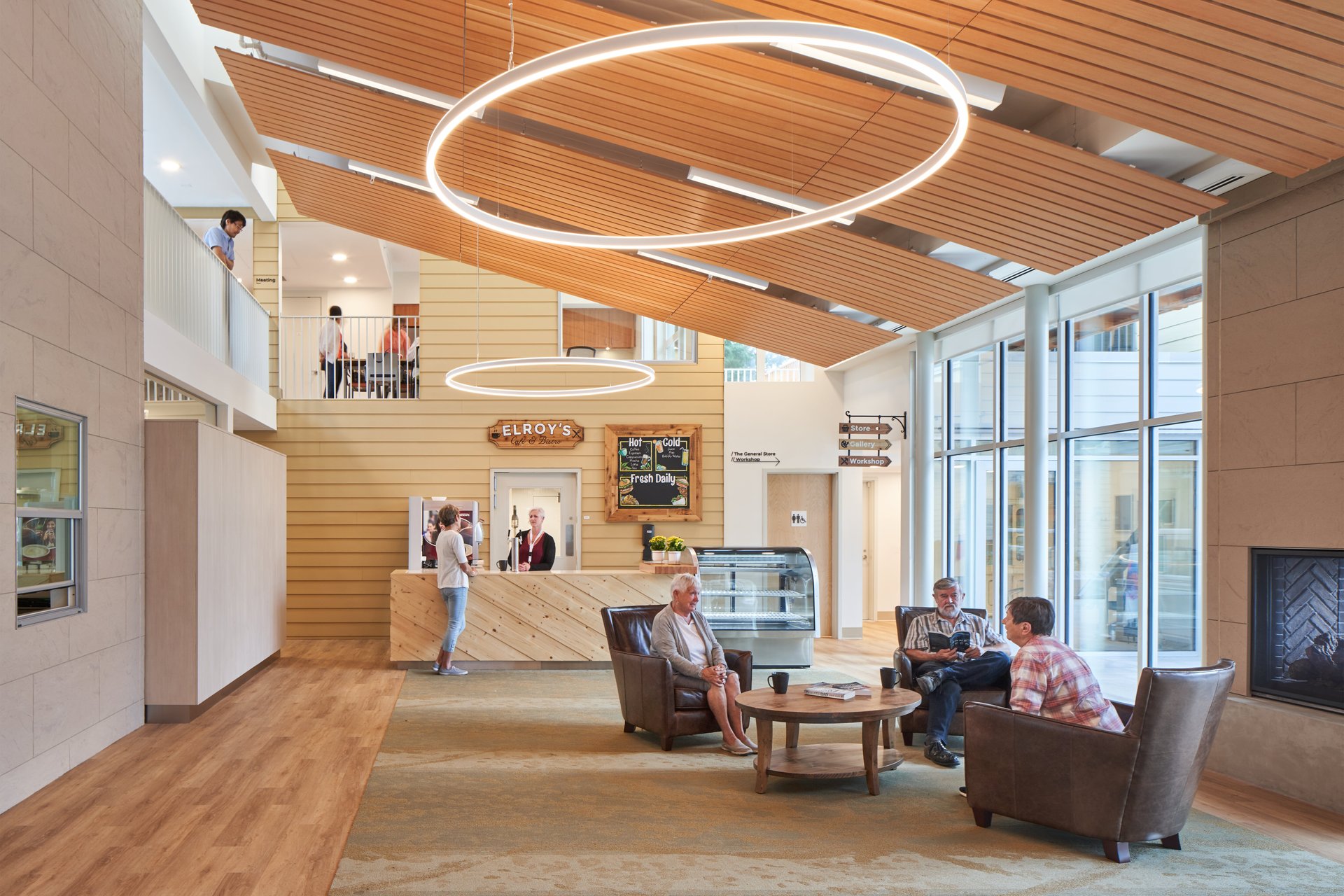
Every household has a name, in this case taken from the trees of British Columbia, like Cedar, Cypress, Holly, and Arbutus. They are multihued in pale but distinctly cheerful colors, because saying to someone, “Your home is the blue house,” if they’re lost, is easier than saying, “you are in the second house on the left,” and expecting them to remember that, Jespersen explains.
The airy homes are equipped with features to make daily living easier for a person with dementia; in each personal bedroom, the toilets in the ensuite baths have red seats so that they’re easily seen and recognized, and in a custom-built wardrobe, an ingenious rack system allows staff to line up a resident’s outfit, with garments arranged in the order you should put them on.
But the real heart of the household is the kitchen, where Jespersen initially wanted his staff to be able to cook full meals in each house, with the residents’ help, just as would be done in any home. Nope, said the provincial regulators, that was too dangerous. So instead, the meals are started in a commercial kitchen near the community-center building and then delivered to each cottage where they’re finished off in super-safe high-tech cookers. It’s one of a few compromises that Jespersen had to live with.
Pushing against the limits
Though he has otherwise retired from day-to-day operations, Jespersen is president of the Friends of the Village Society, through which he’ll network with Langley locals who want to be a part of village recreation, therapy, or events. He sees the coffee shop in the community center blossoming into a place where someone might stop for a beer on the way home from work, he tells me. He’s even hoping that the site will have a few surprise wildlife visitors, as anyone who lives in Langley might.
The day I visit, there is not much happening in the way of village life, but the suites are still only half-occupied. I was also there in the late morning, so while there were a few residents milling about, Jespersen explains that there would be more in the afternoon, closer to dinner time; one of the symptoms of sundowning (the late-day confusion that can afflict dementia sufferers) is to need to walk, or “ambulate” in clinical terms, sometimes for hours. In a regular memory-care unit, residents circle the hallways making loops and figure eights. Here, people are free to wander more widely, in a quiet, natural setting that must be immeasurably more soothing.
Driving away, I try to imagine what it would feel like if I had just said goodbye to my parents there (both of them have dementia). I immediately feel a sense of resentment toward the village’s admittedly attractive cedar perimeter.
Jespersen, actually, is sympathetic to this view.
“This is one of the criticisms we get about the village and I agree with it,” he told. “You shouldn’t have to isolate and create segregated villages for people with diseases. They should be able to live in the community,” he says. But today, “the community isn’t ready to support them.”
“People are working to make communities more ready, and hopefully someday soon they will be,” he adds, referring to a movement to build dementia-friendly cities in Europe and elsewhere. “Then you won’t need to have village like this, or it could be part of a bigger community,” he notes, “without the eight-foot perimeter fence.”